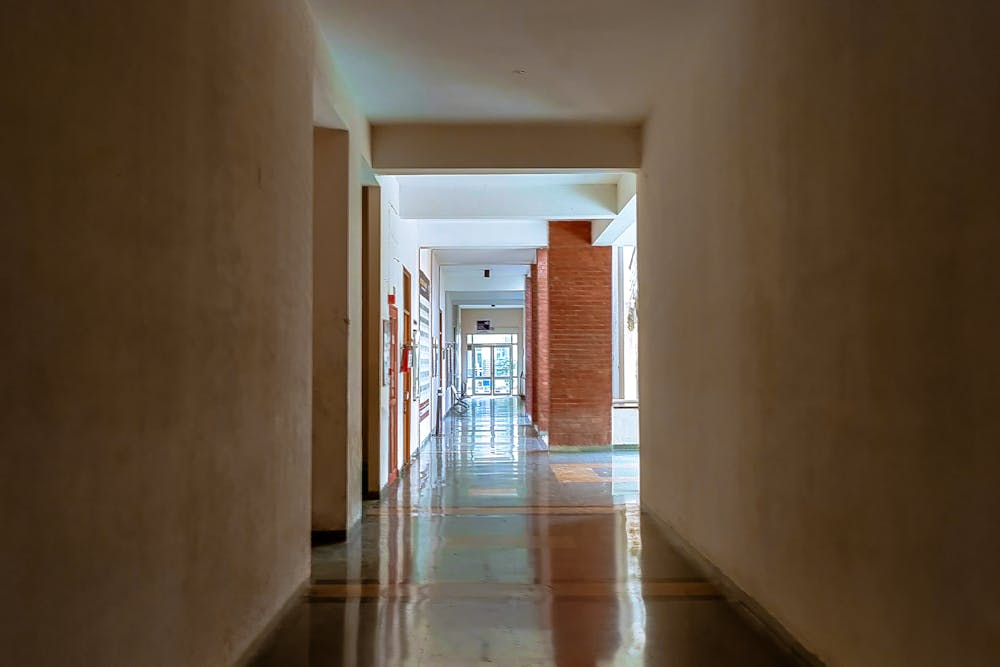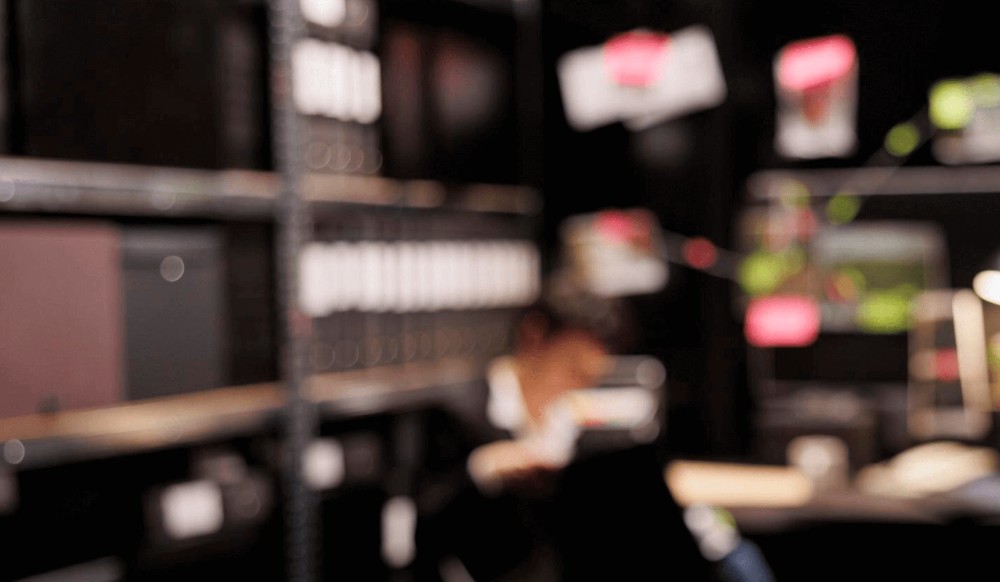When we first shared the launch of Surrey’s Room Clear Tracker, we saw it as a potential step toward long-overdue transparency. For many families, including my own, the absence of data about classroom evacuations has preserved the illusion of safety while concealing the scale of harm. The idea that someone, finally, was counting felt like a form of truth-telling. Yet as the days passed and the conversation deepened, it became clear that even good intentions may not excuse flaws with this initiative.
I write as a parent of two disabled children who have endured more exclusion than any family should have to absorb. My fourteen-year-old son has been in bed since March, his body and spirit worn down by years of unmet needs, deliberate withdrawal of support, and the slow corrosion of trust that comes from being repeatedly pushed out of community life. My daughter, who once approached learning with luminous curiosity, has barely attended half her classes this year after two train-wreak years. One child has been the reason for more classroom evacuations than I can count. The other once called the police herself after a peer repeatedly hurt her and the school refused to bring the necessary resources to bear.
We have lived through every contour of institutional failure—gaslighting, moral injury, performative empathy—but I refuse the easy posture of certainty. These issues cannot be flattened into heroes and villains, nor into data points alone. I believe in accountability, but I also believe in complexity. What is unfolding in Surrey, and across British Columbia, is not a simple story of good intentions gone wrong; it is the anatomy of a system in collapse. We are watching families, teachers, and advocates try to build tools of truth from the wreckage of bureaucracy. They deserve to be seen with the nuance that their courage and fear both contain.
-
Surrey parents launch classroom crisis tracking tool
In Surrey, British Columbia, a new parent-led initiative is bringing long-needed visibility to a…
The need for data—and the risk of exposure
The Surrey District Parent Advisory Council’s tracker emerged from a desperate situation. Children receiving insufficient support becoming so distressed that entire classrooms have had to be emptied. Parents and teachers have been left alone to navigate an unravelling public education system, with staff layoffs, collapsing supports, and unacknowledged trauma in classrooms. The form collects information about “room clears,” “student removals,” and “reverse room clears,” defining each with care and promising anonymity. It is, in many ways, a model of conscientious design—a refusal to look away from crisis.
And yet, the tracker also awakens fear. Perhaps the form could identify disabled children, or that administrators might use it to discipline teachers who were out of the room during a crisis. The anxiety is not misplaced. The history of data in education is thick with examples of surveillance disguised as accountability, where records meant to protect have been used to stigmatise, isolate, or punish. Every community that has lived through bureaucratic harm carries that memory in its bones.
For many parents, the fear goes far beyond privacy or paperwork. It is visceral, rooted in generations of disabled children being labeled and separated once their differences became legible to the system. Even the most careful anonymity cannot entirely silence that dread. A few pieces of contextual data—a grade, a date, a school—can become a map to a child’s identity. Families worry that those details could one day justify segregation, that a well-meaning effort to reveal systemic failure might feed the very logic of exclusion they are fighting to end.
The history of counting and control
The negative history of data collection must be acknowledged. In the twentieth century, regimes and corporations used numbers to classify, manage, and destroy. The Nazi state relied on census data and IBM’s punched-card systems to identify, track, and exterminate Jewish families and other targeted groups. The administrative precision of that machinery turned the act of counting into an act of annihilation, teaching the world how easily bureaucracy can become violence. Colonial powers before and after used similar registries to dispossess Indigenous peoples, to erase communities through enumeration, and to reduce land, culture, and identity to units of state property. Each generation has reinvented the ledger as a moral instrument, claiming efficiency while enforcing hierarchy.
The digital age continues this lineage in quieter forms. Google emerged in the late 90s with a motto of corporate innocence—“don’t be evil”—and a promise to democratise information. Three decades later, it has become one of the largest surveillance entities in human history, mapping the habits, movements, and desires of billions to sell to advertisers. We are the unwitting product for sale. What began as liberation through access has evolved into a global system of behavioural extraction. When advocacy tools depend on such infrastructure, even for noble ends, they inherit that contradiction: using the architecture of surveillance to demand accountability.
-
The right amount of agony in BC schools
After watching my children endure eight years of institutional failure, eight years of exclusion…
Two trackers, two gazes
The contrast between Surrey’s Room Clear Tracker and the BCEdAccess Exclusion Tracker illuminates the moral texture of data itself. The BCEdAccess tool, which has been operating for years and is hosted by the Family Support Institute, gathers stories voluntarily shared by parents and caregivers. I have reported many times because of the pernicious policies of exclusion in Vancouver School Board. Each entry is an act of consent and authorship—a parent choosing to tell their child’s story on their own terms. It is testimony from within, not surveillance from without.
The Room Clear Tracker, by design, can record events that happen to others. A teacher or parent might describe an incident involving a child who has no say in how that moment is represented. Even without names, context can make a student identifiable. In small schools, the date, grade, and pattern of events could point to one child. For families already marginalised, that possibility feels unbearable.
Still, there is another truth here: the work of change cannot rest solely on the shoulders of disabled families. When harm unfolds in a classroom, it affects every child. When the only voices describing that harm are those of disabled students’ parents, systems can dismiss it as bias or grievance. But when families with children without disabilities also report that their children’s learning was disrupted or safety compromised, the story becomes harder to ignore. Solidarity amplifies truth. It transforms individual suffering into collective evidence.
The Exclusion Tracker and the Room Clear Tracker represent two ends of a shared continuum: one centred on testimony, the other on observation. Both are acts of witnessing in a landscape where official silence reigns. Both emerge from the same exhaustion—the recognition that the Ministry of Education has had years of evidence and yet refuses to act.
Desperation as infrastructure
That refusal is what drives communities to build their own tools, often on fragile digital ground. The Surrey tracker lives on Google’s servers, under volunteer management, because no government has stepped in to create an ethical, public alternative. Parents are left to become their own data analysts, risk managers, and privacy officers, performing the work that the province abdicates. It is an extraordinary act of civic care—but also a symptom of institutional collapse.
The tracker’s creators understand the gravity of what they have built. They emphasise anonymity, prohibit names, and promise aggregate reporting. They are trying to walk a line between visibility and protection. Yet every such project inherits the risk that data will drift—repurposed, misread, or weaponised by others. The fear of misuse is real, but so is the urgency of the crisis. People are groping for something solid to hold in a storm of uncertainty, and data feels like the only language government still understands.
The staff perspective
Teachers and education assistants occupy a complicated position within this story. Many feel gagged by district policies that discourage public criticism, as The Canary Collective and other advocates have pointed out. They navigate impossible conditions—too many students, too little support, and a constant fear that speaking out could end their careers. For them, the Room Clear Tracker could offer an anonymous way to document what they cannot say aloud. Each submission might become a data point that builds a truer picture of classroom realities, offering evidence to demand change.
Yet, beneath that hope sits deep anxiety. If the data is ever used to investigate individual incidents or trace responsibility, staff could face sanctions, professional discipline, or reputational harm. This is the paradox of the tracker: it promises both liberation and exposure, a space to speak and a risk for those already overburdened.
The ethics of gaze and consent
For many parents, the possibility of their child being singled out through this tracker is terrifying. These fears are not abstract—they are grounded in history. Generations of disabled children have been separated into special programs or excluded from community schools once their differences were documented and categorised. That lineage shapes how families interpret even anonymous data collection today. When a form asks for information that could, in the right context, point to a specific child, it feels like standing on the edge of an old pattern: visibility that leads to segregation rather than support. Families live with the knowledge that every new data point could either bring protection or reopen the door to isolation.
The anxiety surrounding the tracker reveals a deeper divide about who holds the power to speak. The BCEdAccess tracker honours the principle of “nothing about us without us,” giving families authorship over their own stories. The Room Clear Tracker, despite its integrity of intent, potentially reverses that gaze. It looks at disabled children rather than speaking from within their experience. An archive being built about our children, without our consent. Even if the goal is advocacy, the mechanism echoes the dynamics of surveillance.
At the same time, limiting data collection only to those already marginalised can isolate them further. When only disabled families testify, systems can claim that the issue affects a small, vocal minority. We are regularly dismissed and our children are scapegoated. Collective action requires the participation of everyone touched by educational harm: disabled and non-disabled, teachers and parents, those in the room and those in the hallway. The challenge is to design mechanisms that gather truth collectively while protecting those most vulnerable from exposure.
A failure of government responsibility
None of this should be happening at the grassroots level. The BCEdAccess tracker has already provided years of evidence about exclusion, yet the Ministry of Education has never responded by creating a provincial data system to measure and address it. That failure has left parents improvising and desperate. Ethical, transparent, government-led data collection could remove the burden of risk from families while ensuring privacy, security, and accountability. Data gathered under proper public stewardship could inform staffing ratios, training programs, and equitable funding, instead of existing as a fragile moral archive on private servers.
We can only speculate about the forces behind the government’s paralysis on data. Everything suggests a bureaucracy that has lost its map—reactionary, improvising from crisis to crisis, half-buried in privacy legislation it struggles to interpret, and wholly preoccupied with administrative containment.
Just a Parent
Entire districts have faced cyber incidents that exposed the fragility of their systems, each department guarding fragments of information like state secrets. In such a climate of fear and liability, even well-meaning officials grow timid, prioritising risk avoidance over truth.
Good intentions cannot excuse this incompetence. Protecting children requires something sturdier than bureaucratic anxiety. True governance demands courage—the willingness to confront evidence even when it reveals failure. A ministry that invokes privacy to deflect scrutiny is not safeguarding students; it is safeguarding itself. Until leadership learns the difference, every spreadsheet built by parents will stand as a monument to the government’s abdication of moral responsibility.
Just a Parent
The Room Clear Tracker appears to use a standard Google Form, meaning its data is likely processed through Google’s global infrastructure rather than a Canadian-only server. While this setup does not suggest wrongdoing, it raises valid questions about data sovereignty and privacy. Community-generated educational data may fall under foreign jurisdictions and corporate policies beyond Canadian oversight, precisely the kind of vulnerability that national privacy frameworks are meant to prevent—especially when the information concerns children and those already most exposed to institutional risk.
Desperation and solidarity
The reaction to the Room Clear Tracker captures the complexity of the moment. Some see it as a dangerous precedent; others as a courageous act of truth-telling. It’s definitely complicated. It is possible to hold fear and hope together—to recognise the risk of exposure while honouring the necessity of bearing witness.
The situation in Surrey is dire. Layoffs and hiring freezes have gutted the district’s capacity to support its most vulnerable students, with Surrey schools reportedly cutting around 50 education assistant positions while leaving others unfilled. Teachers are stretched to the breaking point. Parents are terrified and tired. In that atmosphere, data collection becomes both a lifeline and a liability.
The task now is to build solidarity rather than fracture. Parents of disabled and non-disabled children and educators share a common goal: classrooms where every student learns in safety, dignity, and belonging. Data can serve that vision if handled with care, co-design, and consent. But it must never replace the human work of relationship, trust, and empathy.
Counting as an act of care
The future of ethical advocacy will depend on how we count. Counting can expose neglect or entrench it. It can humanise or dehumanise. What matters is who holds the pen, who interprets the numbers, and who is protected by their publication. The Room Clear Tracker is a mirror reflecting both the bravery and the peril of grassroots reform. It shows a community refusing invisibility, even at personal risk. It also shows how urgently we need public systems capable of gathering this data safely, transparently, and with moral clarity.
Until then, every number gathered by parents and teachers is a testament to absence—the absence of care, of policy, of trust. The act of counting says: we see what you refuse to see.
-
Too afraid to see: why the BC government doesn’t track exclusion
Data is the scaffolding of democratic accountability. Without shared facts, policy becomes theatre and…
-
Counting crisis: data, distrust, and the false choice between safety and inclusion
Across British Columbia, the launch of Surrey DPAC’s Room Clear Tracker has ignited a…










